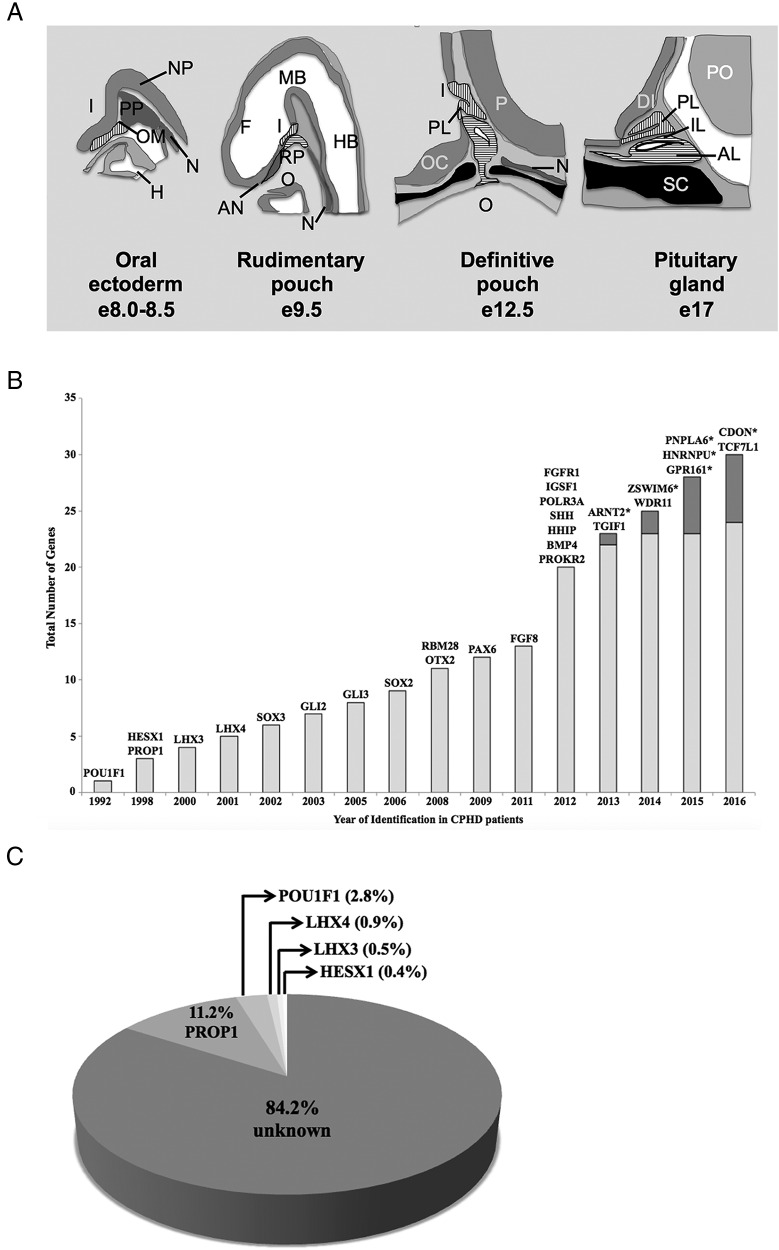Figure 1.
Genetics of CPHD: timeline for discovery, cases explained, and developmental expression. A, Mouse pituitary development. Tissue fated to become Rathke's pouch is located at the anterior portion of the embryo. It is in constant contact with the neural ectoderm, which becomes the infundibulum. At e9.5, the oral ectoderm begins to invaginate to produce Rathke's pouch (horizontal hatching). At e12, the cartilage (black) begins to form, and Rathke's pouch pinches off. The posterior lobe (vertical hatching) is formed from evagination of neural ectoderm, and it produces FGF, which stimulates the growth of the pouch. The anterior and intermediate lobes are derived from Rathke's pouch and contain the major hormone-producing cell types by birth. The corresponding time in human development is weeks 4–9 (Carnegie stages 8–22) (418). Orientation: sagittal section with rostral to the left and dorsal at the top. I, infundibulum; H, heart; N, notochord; OM, oral membrane; PP, prechordal plate; F, forebrain; MB, midbrain; HB, hindbrain; AN, anterior neural pore; RP, Rathke's pouch; O, oral cavity; PL, posterior lobe; P, pontine flexure; OC, optic chiasma; IL, intermediate lobe; AL, anterior lobe; DI, diencephalon; PO, pons; SC, sphenoid cartilage. [Redrawn from H. Z. Sheng and H. Westphal: Early steps in pituitary organogenesis. Trends Genet. 1999;15(6):236–240 (166), with permission. © Elsevier.] B, The timeline of gene discovery for CPHD. The light gray bars represent the total number of genes identified by the candidate screening methods; the dark gray bars represent the total number of genes identified by the WES. For each year, the identified gene names are at the top of the bar. *, Gene identified by WES. C, Pie chart indicating the familial and sporadic cases of CPHD that were explained by mutations in the genes PROP1, POU1F1, LHX3, LHX4, and HESX1. Data are summarized from an extensive literature survey, which illustrates the variation in frequency of PROP1 mutations by ethnic groups (46). Because systematic screening has not yet been done for the other CPHD genes, it is not possible to estimate their frequency, but it is expected to be quite small.

